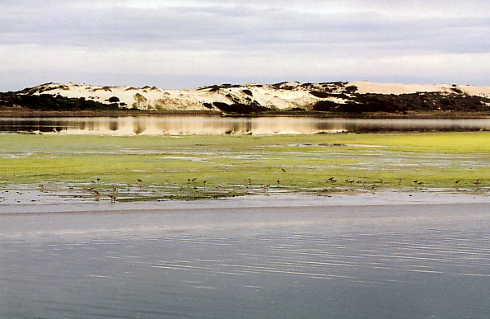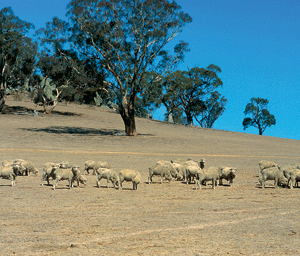
|
Published: 14 November 2011
Are Australian fish in hot water?
We are already noticing the consequences of climate change on land, but what do they mean for our aquatic environments, their fish and fisheries?
To try to answer that question, ‘Climate change and the aquatic environment: the future for fish and fisheries’ was the subject of a focused scientific symposium held in Melbourne in July by the Australian Society for Fish Biology. The symposium’s key findings, which have been published in a special issue of the journal, Marine and Freshwater Research, provide an up-to-date synthesis of the Australian situation.
Fish are a key component of aquatic biodiversity and so contribute to valuable ecosystem services1. Australia’s marine and freshwater environments contribute substantially to tourism and support valuable commercial and recreational fisheries, while many Indo-Pacific countries in the region rely on both commercial and subsistence fisheries. Climate change is affecting all of these aspects of fish and their habitats, as well as the humans that depend on them.
Climate change impacts differ between fish species, locations and ecosystems. Ocean surface temperatures have already increased by an average of about 1ºC globally over the last 140 years – but by about 2ºC in the Tasman Sea, east of Tasmania, due to currents moving south. As consistent temperatures are fundamental to cold-blooded creatures such as fish, any changes represent a direct, widespread effect that may alter fish reproduction, physiology, growth, movement and behaviour. Temperature changes also affect ecosystem productivity, coral bleaching being a well-publicised example of the dramatic impact of higher ocean temperatures.
Many fish have already responded to increasing ocean temperatures by moving southward. Tasmania, for example, has given a number of new records of marine species from northern waters. Such movements are more difficult for freshwater species, as catchments are disconnected or often blocked by barriers such as weirs. Australia’s cool-climate freshwater species don’t have the same opportunities to move to higher altitudes to compensate for increasing temperatures.
Another climate change-related issue is that an increased level of carbon dioxide (CO2) in the atmosphere means more CO2 is absorbed into the oceans, increasing their acidity. Ocean acidification poses a direct threat to calcification processes (where calcium is deposited out of seawater for skeletons and shells), which particularly affects corals and juvenile fishes.
Other impacts will come as a result of changes to habitats. Alterations to water flows, changes in estuarine salinity and shifts in vegetation, will all affect aquatic ecosystems. Increased storm frequency and severity will also damage structural habitats such as coral reefs. Such indirect impacts occur in various combinations, making prediction difficult and potentially causing some unexpected outcomes. Examples might include ecosystem changes caused by new invasive species that affect fisheries, or impacts on breeding or fish feeding due to sediment inputs from increased fires.
Climate change impacts are not the only stressors to aquatic ecosystems; an understanding of how climate change might interact with these other stressors is crucial. Freshwater ecosystems may be particularly vulnerable, with some impacts illustrated in the recent drought (and then floods) in south-eastern Australia. In areas with predicted drier climates and increasing pressures on freshwater resources, there may be threats to Australia’s endemic and diminished freshwater fish communities, which already have many species of conservation concern.
Most public discussion on climate change has centred on issues such as reducing carbon outputs, carbon taxes, alternative energy supplies and other global solutions. In the meantime, climate change is already affecting our fish and fisheries. These changes will be sustained and ongoing, and there is a sense of urgency to recognise and manage these problems.
In doing so, we need to analyse the current situation and impacts, then model predictions into the future. We must use models that incorporate biological, ecological, management and human dimensions to best determine possible future impacts. We must also prioritise the most vulnerable species, locations and ecosystems, using and furthering the latest science to most effectively manage the range of existing and potential impacts of climate change.
John Koehn is a Principal Research Scientist at the Arthur Rylah Institute for Environmental Research, Department of Sustainability and Environment, Victoria.
More information
1 Ecosystem services are the multitude of resources and processes of benefit to mankind that are supplied by natural ecosystems. They can be valued economically.





